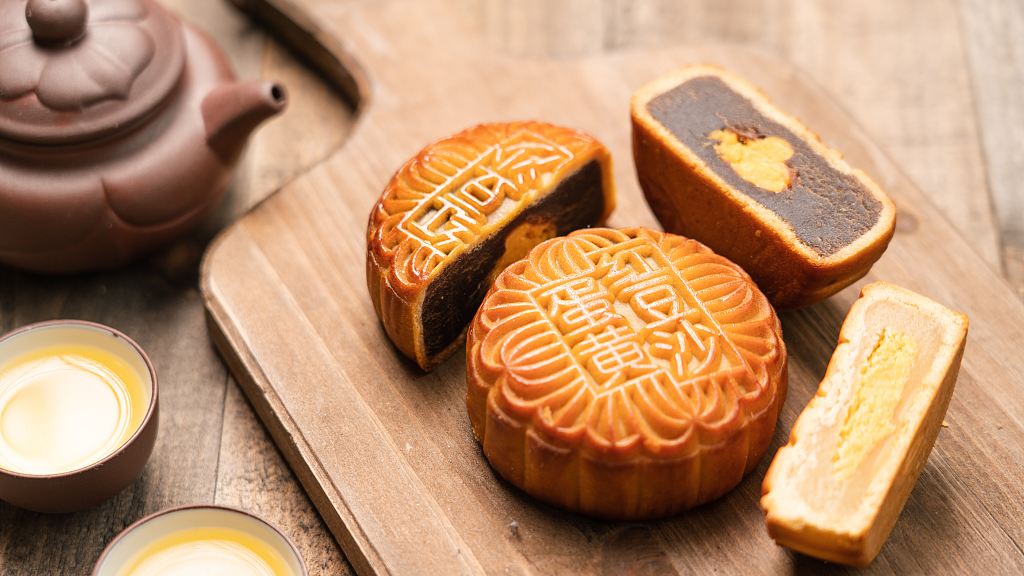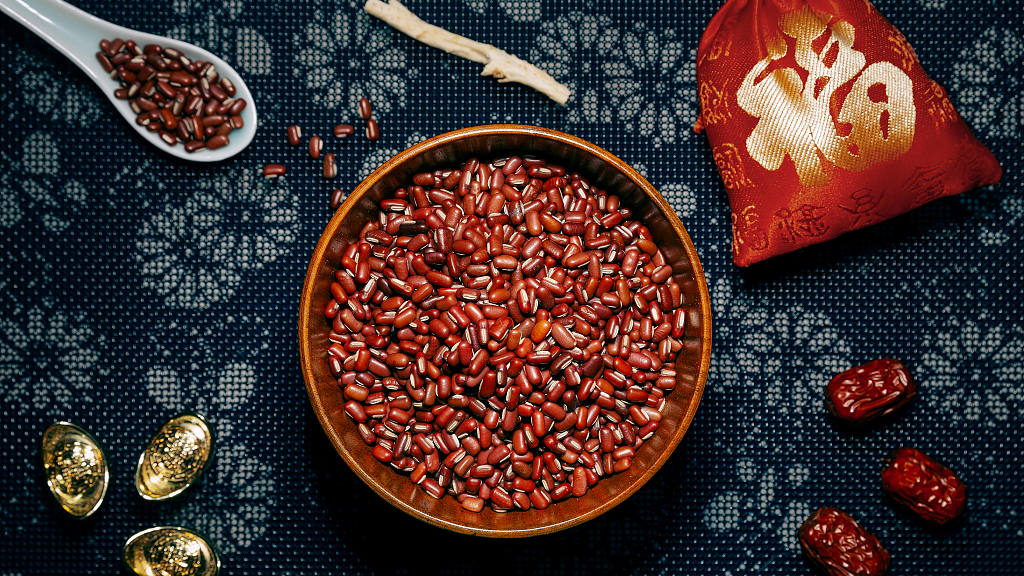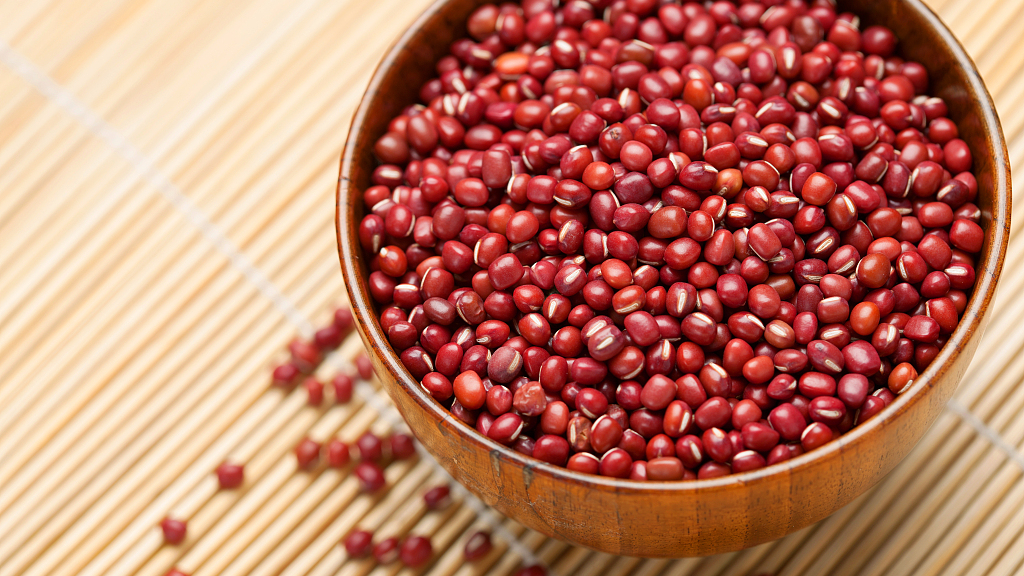
The Mid-Autumn Festival is celebrated on the 15th day of the eighth month of the lunar calendar. This year it falls on September 13. One of the most traditional ways of marking the occasion is eating mooncakes. But do you know what this round pastry hides inside?

Red bean paste is a traditional mooncake filling, also used in a variety of pastries. /VCG Photo
The sweet bean paste may satisfy those with a sweet tooth. It's made from red beans, or adzuki beans. In China, the adzuki bean is a symbol of romance. Wang Wei, a poet from the Tang Dynasty (618-907) connected the plant with love in a famous poem:
The red bean grows in southern lands
With spring its slender tendrils twine
Gather for me some more, I pray
Of fond remembrance 'tis the sign
(translated by W. J. B. Fletcher)

In China, red beans are a symbol of good luck because of their auspicious color in the traditional culture. /VCG Photo
China has the largest production of red beans in the world, and the biggest growing area is in the northeastern province of Heilongjiang. Baoqing County in Heilongjiang Province produces the best red beans, honored as "edible ruby." The county produces 60,000 tonnes of red beans annually. The legume is sold domestically and exported to nearby countries such as Japan and South Korea, where red bean pastry sells like hot cakes.

A bowl of red beans from China's northeastern province of Heilongjiang. /VCG Photo
To learn more about what is in your mooncakes:
https://news.cgtn.com/news/2019-09-09/What-s-in-your-mooncake-Part-I-JQdooQ5lS0/index.html
China's Flora Tour
From the wetlands along the coast to the dense rain forests hidden in the southwest of China, all boast an array of plant species. In this series, we will go on a tour to learn about some of the most iconic flora in different provinces and see how they live in harmony with the local climate and topography.
(Cover image via VCG, designed by CGTN's Yu Peng)
(If you want to contribute and have specific expertise, please contact us at nature@cgtn.com.)

Copyright © 2018 CGTN. Beijing ICP prepared NO.16065310-3
Copyright © 2018 CGTN. Beijing ICP prepared NO.16065310-3